In this week's newsletter, guest author Celia Hicks remembers her childhood years in Hong Kong. Celia has provided several family photos, and I've added in extra photos from the Gwulo website where they match the story.
I arrived in Hong Kong in 1947 as a six-year old with my mother Winifred Alice Collins and older sister Sheila on the troop ship Dunera to join my Dad who had been posted to HK by the Admiralty after the Japanese surrender. He had travelled out via Malta in 1946 and must have seen the devastation caused to the island by German bombing raids. Malta had been crucial in being a supply and repair location for the Allied war efforts. It has been said that Malta received more bombs than London suffered in the blitz. It survived, which is why its Government was presented with the George Cross by King George VI.
My father, George C. S. Collins, had travelled out on the aircraft carrier Ocean to become the Superintendent of Gyro Compasses for the Far East, based at the HK Dockyard. At that time, we had a large Navy as did the Americans.
HMS Ocean, by Celia Hicks
On arrival he joined other men at The Cecil Hotel where rats visited the rooms at night! Also Cyril Pugh had smuggled two baby Labrador pups with him on the Ocean!
Hotel Cecil 1946, by Celia Hicks
We had had a six-week voyage from Southampton via Suez, Aden, Bombay, Colombo, and Singapore where we went into the very Raj Raffles Hotel for tea, witnessing so many different cultures. Raffles was fascinating to a six-year old. Large metal fans turned in the vastly high ceiling, there were rattan chairs and tables with glass tops and potted palms to complete the ambience.
Raffles Hotel Singapore, by Bryan Panter
On our arrival I remember Daddy standing on the dockside at Kowloon wearing white 'duck' and under a traditional umbrella in the rain. It was a year since we had seen him. Very emotional.
Family reunited, by Celia Hicks
We drove up The Peak in an RN truck, an experience in itself with all the hairpin bends! There was a notice in the truck which said 'Unauthorised persons are prohibited from travelling in this vehicle'. Daddy was impressed that I could read it as I was only just starting school when he left.
On arrival at Peak Mansions there were signs of the war damage; the lift was broken and at least one of the rooms damaged but to me the building was impressive. The Peak Tram terminus was nearby and there was also a derelict building on the hillside above. A walk took us to Mt Kellet and the Matilda RN Hospital.
Peak Mansions & Mount Kellett, c.1950, by ThePeak
Looted houses on the Peak after WW2,
by John Florea, The LIFE Picture Collection, Getty Images
We lived in what seemed to me to be a spacious flat on the 1st Floor, 16 Peak Mansions, built with an internal courtyard. From about 2000 ft it overlooked Pok Fu Lam Reservoir and had an enclosed balcony and of course, servant’s quarters. Sheila and I played ‘jacks’ on the tiled floor of the enclosed verandah.
All our drinking water had to be boiled. Ours was stored in ‘gin’ bottles in the fridge which was powered by paraffin. We hadn’t had a fridge in England so it was another novelty for a small child.
The humidity was such that clothing had to be changed frequently; there was no air conditioning on the island except for the HSBC building and the Dairy Farm, let alone in the flats we lived in.
We slept in RN issue beds with iron bed frames, mosquito netting suspended above. That did not stop me getting severely bitten from the ample offspring of the mosquitoes that infested the dark, inner Mansion courtyard. I had to have my legs washed with Noxema soap and bandaged at night to stop me scratching. There was a fear of impetigo setting in. It was agony!
At night the neon lights lit the harbour with wonderful reflections. For two children who had recently experienced the ‘black-out’ the sights were truly fairyland.
We had a special treat…to go to the Café Wiseman in, I think, Des Voeux Road, or perhaps Queen’s? It had a flashing outline of an owl projecting from the doorway. Downstairs, the waiter brought us a silver trolley laden with beautiful cakes. I chose the “chocoliest” one! Owing to the war we hadn’t seen anything like them before! Daddy didn’t much like the bill!
Cafe Wiseman-1950, by IDJ
The Dairy Farm used to make ‘popsicles’, fruit ice lollies which cost 10 cents and ‘fudgsicles’, chocolate lollies which were two sticks wide with a joining bit too and cost 30 cents. You can imagine which were my favourites!
Sek Kong Popsi, by David Green
My sister and I attended the privately run Peak School and were Brownies. Sheila was a Fairy and I a Sprite….’Here we come the sprightly Sprites, brave and fearless like the knights. LAH, LAH, LAH (Lend a Hand) as we danced around the Toadstool!
1920s Brownies, by David
Sheila and I played in the bamboo thickets, open storm drains and avoided snakes! We also cooked bacon and eggs on biscuit tin lids until one day Sheila still had her brown KGV school blazer on and caught the sleeve alight. That put an end to those sorts of adventures.
New shoes were hand-made in a couple of days after our feet had been drawn around. Likewise, with any clothing as there were many Indian Emporia and the cloth choices were mind boggling. We had some lovely dresses made always with matching knickers. There were very tall bamboo stools for us to sit on while Mummy made arrangements and those lovely fans were turning slowly up in the high ceilings.
I made three visits to Queen Mary Hospital where the RN / Admiralty patients occupied the top floor of six. I went in for tonsils, a broken nose and an undiagnosed dislocated shoulder following a fall, and finally amoebic dysentery which put me in yet another private room with a balcony for a whole month! I had to have pretty primitive treatments. Also, I was told that I was the first child to have the newly produced antibiotics. I was ill! Nurse Cunningham used to try to cheer me so every afternoon she found time to read me AA Milne’s, ‘Winnie the Pooh’. (Perhaps a pun?) I was also brought duck eggs to strengthen me but they were a bit strong in taste. When I was getting better, Nurse Cunningham would find an excuse to take me up onto the roof which had washing lines and thankfully, parapets. She used to meet her RN boyfriend there! Although I can’t remember why, I also recollect being on my own in a room with a long, white coated, metal tube; so I crawled into it! It was an iron lung, used to keep polio patients breathing. I felt very brave!
Queen Mary Hospital above Pokfulam cemetry, by Andrew Plumbly for SHP
While there we were visited at Peak Mansions by two cousins. John, was an ordinary sailor doing National service. His family came from Birdlip in Gloucestershire but I am not sure where he fits in to the Lewis’s, my mother's family. I think he was eventually in farming. The other cousin, one of my father’s, was an officer in 45 Commando, Bob Wall who was engaged in the Malayan Emergency. It was he who met us at Penang on the way home in 1951 and took us to a swimming pool complex. I remember an embarrassing moment when Sheila asked him in all innocence if he had ever killed anyone. Later, he married a ‘Pat’ who by accident met my mother in a shop in Bath.
Earlier there had also been another embarrassment when both cousins turned up at Peak Mansions within a short time of one another and John, homesick, had to leave as ranks cannot mix even from different Services.
Our servants were special… Chen, the cook ‘boy’, an intelligent man, a refugee from Mao, with his wife, then Ah Be and eventually Ah Toy who looked after Rosemary as a baby. She wanted to come back to Britain with us but it was not possible. They would go to the markets down in Victoria and we were spoiled with bananas by the handful, pomelo and lychees. I suppose because of the legacy of war-time rationing Mummy used to insist we finished our dinners whether we liked it or not so we were sometimes at the table for two hours. We would outwit her by going to the toilet with food secreted in our handkerchiefs!
When I returned home following the fall Ah Be opened the door and blurted ‘Missee Cela, what you done? My face was a bit of a mess.
The Amahs used to plait my hair for me. It was so thick that I would be in tears trying to do it myself. The Chinese at that time were not yet into hair colouring, all being very dark. My red locks stood out as did my freckles and I was aware of being stared at if we went on the Star Ferry to Kowloon. It made me quite shy.
There were many refugees and fires broke out in the 'squatter' homes. The poverty was startling. Children would be sent from a junk or sampan to hold out their hands to beg. ‘Cumshaw’ was their cry. One of our Amahs, Ah Be, made herself some knickers sewn from scraps of cloth patched together. She slept with her carefully smoothed hair on a shaped wooden block.
At another time in the years before we finally returned to the UK in 1951, we also occupied 29 Peak Mansions on the top floor. We also lived for a time at Argyle Street in a first floor flat surrounding a quadrangle of lawn with a hedge of red hibiscus. This was near Kai Tak aerodrome where I remember climbing alone inside a fighter plane. I loved ‘Biggles’! No-one knew and of course I did no damage.
1940s Spitfire at RAF Kai Tak, by ww2images
Before returning home to the UK on the P&O Carthage we also lived on Stonecutter’s Island, most adventurous for my sister and me as we went to school via an MTB and played on the beaches, climbing around the barnacle encrusted jetty supports and at low tide looking at the puffa fish and other creatures left behind. There was an Army radio station and army quarters there.
Phil & Kathy leaving Stonecutters for Home 1963, by colincam
When our parents were going to a cocktail party (by boat) Sheila and I would arrange midnight picnics with other children. We had to descend a rough, muddy pathway holding on to a rope ‘bannister’. I burned my wrist once when I slipped. The problem was, we were often the only ones to turn up!
Our youngest sister Rosemary was born in Kowloon Hospital in 1950. We called her ‘Cookie’ because she was good enough to eat. Ah Toy was her Amah and wanted to come back to the UK with us but it was impossible. Mummy was suddenly very slim though it didn’t last as the good life was good!
Commodore Brownfield was the man in charge of the Naval Establishment and Sir Alexander Grantham was Governor. On one occasion, as Brownies we were entertained at Government House. I also remember attending St John’s Cathedral, probably the same day.
1954 The Governor's Residence, by Gerard Wallwork
Cheero Club and Cathedral., by Brian Campion
My father would also fly to Saigon and Sasebo to organise the repair of US, British and Dutch ships. Whenever he went away, we always seemed to have a typhoon and we hid in the dry cupboards away from any danger from glass windows.
Eventually my older sister went to King George V School in Kowloon which was multi-national and set in lovely grounds with a cricket ground.
KGV School, by Admin
At that time I attended a school in Victoria Barracks (Miss Tebay was the kindly teacher) and then Gun Club Hill on Kowloon side.
Victoria Barracks School...1948, by Celia Hicks
There were no school lunches. We had sandwiches and as I couldn’t go home as others, along with another girl, I suggested that we took ours to the Officers Mess which had potted plants and rattan tables and chairs. We sat down to eat when a steward, came to us and gently said that children were not supposed to be here. We had to re-group to the ‘other ranks’ dining room. I was surprised and a bit miffed.
It was the time of the Mao revolution against Chiang Kai Shek and the Amethyst incident. The ship crept into harbour, completely shot-up. There were awful tales of death and the surviving men eating rats and anything that crawled while they were held up in the Yanktze for many months. My father was of the opinion that Commander Kerans should have been court-marshalled for hazarding his ship and its crew but true to Navy tradition he was decorated for sneaking out bravely and bringing it home to HK !
HMS Amethyst berthing at Tamar, by IDJ
Dad had bought an ex-Works Department (WD) Hillman which was so useful to take us to the beach. It was difficult for him to get into but the steering wheel fitted between his knees and he managed. He was able to ship it home with us in 1951. Getting back into a red-hot car after swimming at Big Wave or Repulse Bay was awful. We had had to carry our beach gear all the way up the sandy track and were hot already!
Some weekends we took Dad's allocated three-hooded launch to Silvermine beach on Lantau Island. We boarded at Blake Pier with naval colleagues manning the boat. They loaded the aft cabin with beer and food and soft fizzy Corona Ice Cream Soda which I particularly liked. The bottles opened via a metal fastening loop. Sheila and I would lie on the prow wearing large sun hats and count the jelly-fish.
Silvermine Bay, by Malcolm Trousdale
More often, we drove to Big Wave or Repulse Bay then completely undeveloped. We blistered in the shade of the rocks! Our only remedy was Nivea cream in which we fried and calamine lotion to cool burned skin. Sun-screen had not been invented. Mummy went brown but Sheila and I were fair and we had to be careful. I blistered!
Our parents had bought us rubber inflatable rings and we blithely bobbed out to where my father and other men were diving off a pontoon. Dad spotted us and gravely suggested that we’d better go in towards the shore. What he didn’t say was there were sharks about! I saw a drowned man on the beach once before Mummy hustled me away. Big Wave Bay was aptly named.
Big Wave Bay, by njkitto
We also enjoyed the culture of Tiger Balm gardens with its statues of dragons and walked around the Peak regularly taking in the lovely waterfalls, ferns and mosses and the traditional Chinese style gateways to property.
Tiger Balm Gardens pagoda-1949, by IDJ
In the winter we wore thick coats, the temperature being around 18 degrees and in direct contrast to the heat and humidity of the summer. On the odd occasion when in the summer we went into the air-conditioned, seemingly freezing HSBC building, the blast of heat in the street on departing was almost too much.
Regularly we had inoculations for TAB and Cholera and less frequently, vaccination for Smallpox. They were quite painful but taking Mummy’s advice to swing our arms and then get to bed for a good sleep, we managed.
Daddy played hockey and cricket. My love of cricket came from scoring for his team. The hockey was at the site of the POW camp at Stanley. We had egg and chips after one of the matches, a conversion for me as I didn’t care for fried eggs until then.
Hockey at Stanley, by Celia Hicks
In 1949, Dad was a founding member (Brother) of a revived Zetland Masonic Lodge. There is a photo of him in procession when the foundation stone was laid. He is the big man in glasses.
Kennedy Road - Zetland Hall Foundation stone, by J3 Tours Hong Kong
When the then Princess Elizabeth married Prince Philip the ships in the harbour were dressed overall and made whooping noises to celebrate. The view from the Peak was superb, not clouded that day.
We saw ‘The Wizard of Oz’ for the first time at the China Fleet Club. Magic! On one occasion we also presented flowers there: Sheila to Lady Madden wife of Gunnery supremo Sir Charles Madden who must have been on a visit, and me to Mrs Brownfield the Commodore’s wife. We wore our long skirted, pale blue brocade bridesmaid dresses, (from Doreen and Graham Parker’s wedding) and sailors danced with us. Lovely for very young girls.
Presenting flowers at the China Fleet Club, by Celia Hicks
We attended children’s parties on the ships HMS Belfast, Jamaica and the London, the sailors being so delighted to have some sort of family contact. There were many cocktail parties for the adults and my parents in full evening dress were ’piped’ aboard. Very Raj!
HMS Belfast / Hong Kong 1950-52, by hallamn
On one of the ships we once made wax disc recordings organised by the sailors. I recorded: “Pretty Mr Squirrel, In the big oak tree, Let me stroke your brown fur, Come and play with me. But pretty Mr Squirrel was too shy to play, So he dropped his acorn, And then he skipped away.” My mother kept the disc for many years. It was funny hearing my little voice piping away. I think Rosemary may have inherited it along with quite a few photographs.
I think Sheila did a Robert Louis Stevenson poem…Bed in Summer: “In winter I get up at night and dress by yellow candlelight. In summer quite the other way I have to go to bed by day. I have to go to bed and see the birds still hopping on the tree and hear the grown-up peoples’ feet still going past me in the street. And would it not seem hard to you when all the sky is clear and blue, when I should like so much to play, to have to go to bed by day?”
We returned, on another six-week voyage, on the P&O Carthage and I renewed my interest in other cultures and sympathy for abject poverty which has lasted all my life. On this voyage we were spoiled by the quality of the service and food though we only had smallish cabins. Children had their own dinner menu and ate earlier than the adults. There was a swimming pool which I frequented. When we got to Penang, the RM 45 Commando officer-relative of my Dad, cousin Bob Wall, met us and escorted us to a swimming pool complex where I, at last, took my foot off the bottom and actually swam on my own! A great day! I spent our stop in Aden in the swimming pool but got heat-stroke and was quite ill.
Sheila and I had been given a huge jar of ‘cushion’ sweets some of which we did not like so as we had a porthole, we jettisoned the jar into the Suez Canal and watched it float away. I recollect Army uniformed men watching from the bank as the ship went by.
On Sheila’s birthday April 11th 1951 we were in a terrible storm in Biscay. The ship had no stabilisers so it rolled and pitched. I had a fine old time! Unknown to my parents who were probably too ill to care, I was up on deck, hanging onto rope bannisters around the superstructure, hauling myself forward, fighting the wind and then once around the prow running with the wind down towards the stern! Exhilarating! I knew that it was so many times around the deck for 1 mile and I know I did nine and a half before I thought I should go in. Then I was ill too.
We sailed past a sunlit Isle of Wight to Tilbury where it was raining! Sheila and I were wearing wool apple-green fine-wool suits with box-pleated skirts and frilled-collar, short sleeved, white silk blouses. Daddy carried a black Official leather brief case in which he had placed whisky! In those days only a set amount of money or goods could be taken out or brought into the country but no-one could challenge his official bag!
Celia Hicks (nee Collins) June 2021
Many thanks to Celia for sharing her story with us. If you can add more memories of these places and incidents, please leave a comment below or upload a photo.
And if you'd enjoy reading more stories like this, we've got many more recollections of life in Hong Kong.
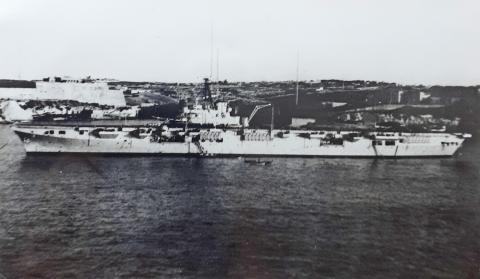
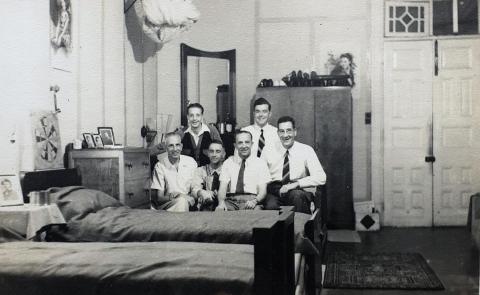
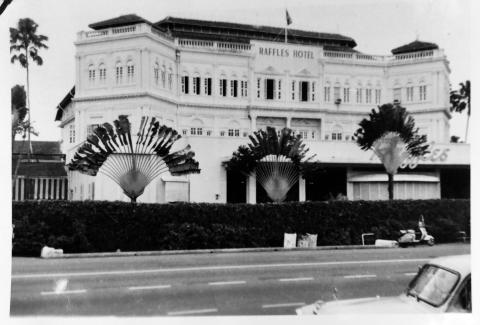
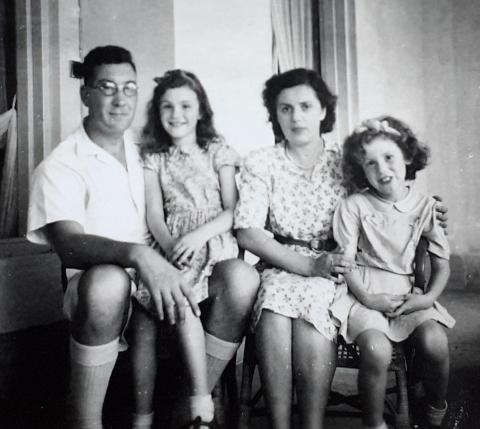


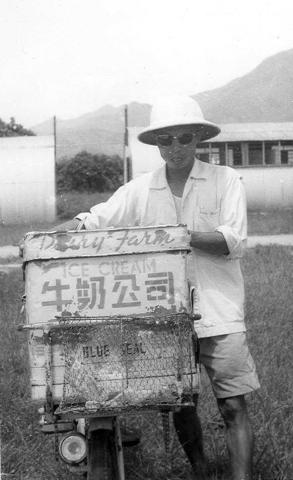

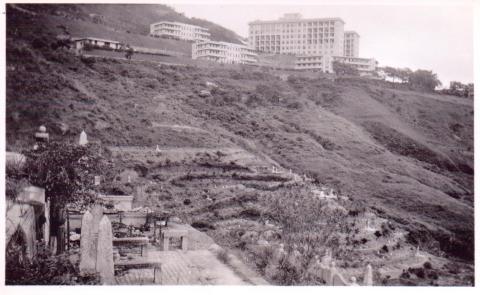

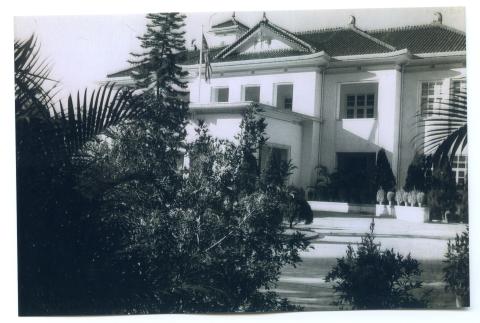

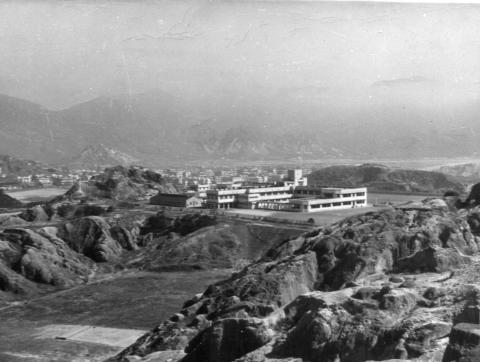
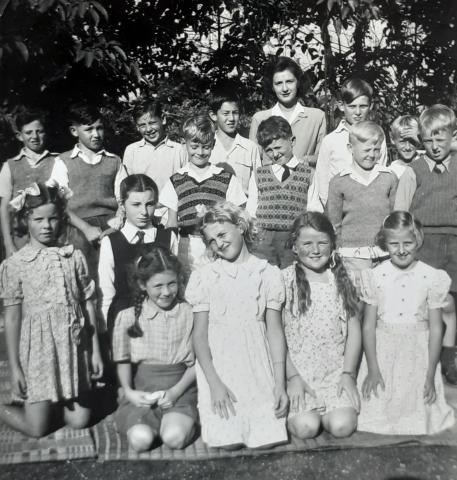
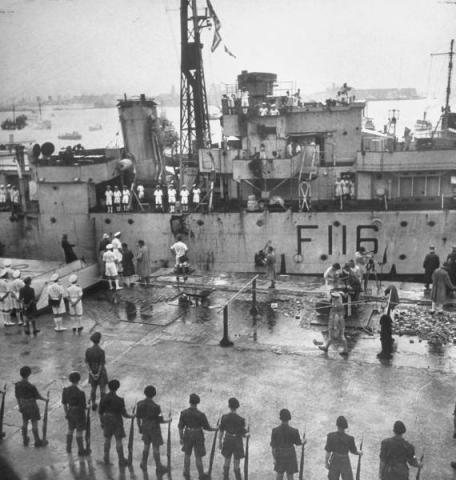
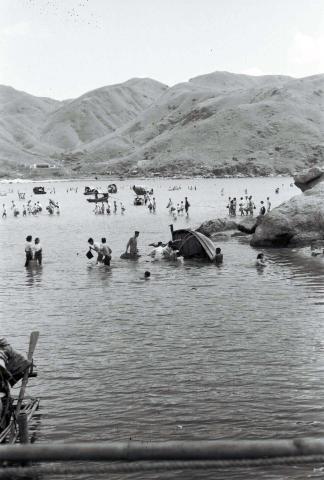
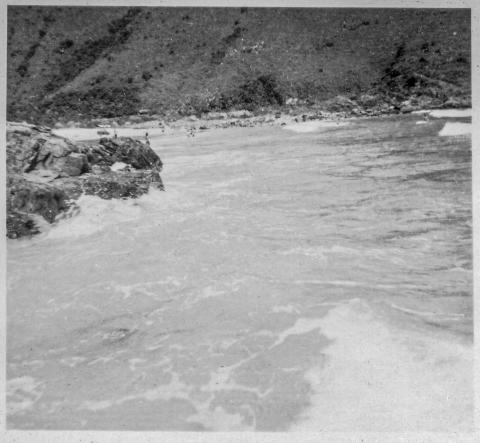
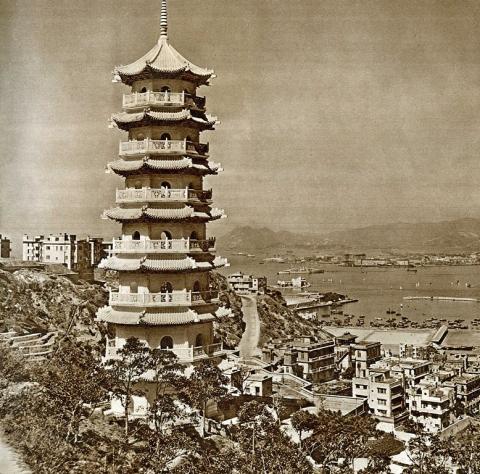
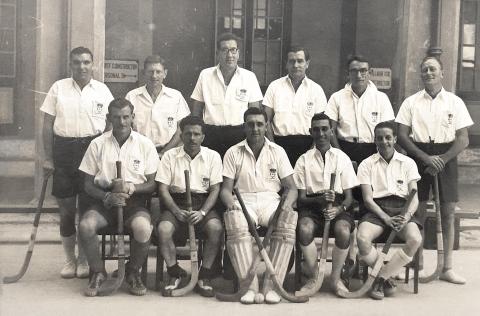
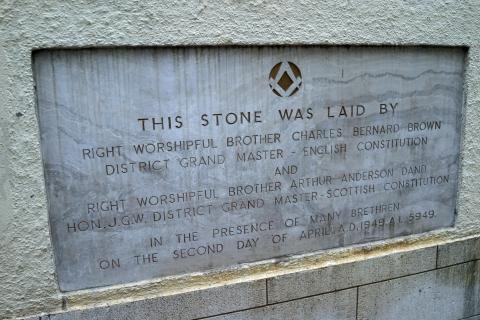
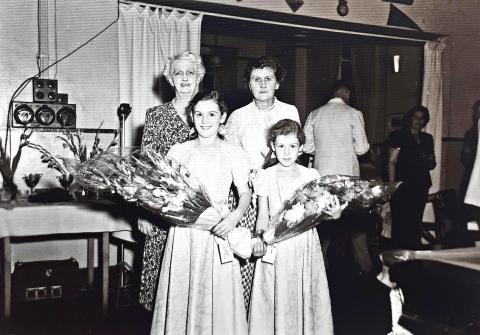
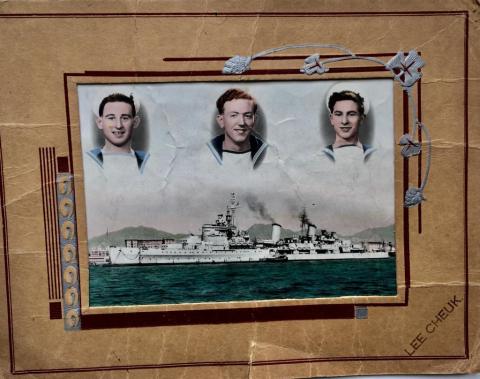
Comments
Childhood Memories
Lovely memories Celia. I am slightly younger but share many of the places from my time in HK 1948 - 51and have previously posted some photographs.
Celia’s childhood memories
Thanks so much for sharing these wonderful stories. Absolutely fascinating.
Childhood in HK
Celia, thanks very much for sharing your evocative and entertaining childhood stories with us. What an adventurous few years you had in Hong Kong!
Re: Childhood memories
Most interesting to read, and amazing that you remember so many details.
Here's a photo of the P&O Liner Carthage on which you left Hong Kong - this photo is from 1957.
Celia Hicks
Thoroughly enjoyed hearing your memories of Hong Kong - we arrived in 1951 ... your
memories are so much clearer than mine but a few of yours certainly rang bells.
Ice cream soda's - I can almost taste it! (although my drink of choice was Green Spot!) ..
I wonder if the place you lived on Argyle street was Chan Gardens (it did have another name though) we
lived there for a number of years and just as you described surrounded by a high wall which meant our
parents were happy for us to bike around the 4 blocks. Big Wave Bay - loved it but oh dear - I thought
I'd never make the long hot thirsty walk back up that hill (I wonder was that because we were small at
the time or was it really a long climb) - just nothing around - no buildings.
Thanks again. PA Reed
Chan Gardens
There are a couple of photos and some memories of the building at https://gwulo.com/node/41838
Boy = Servant
Our servants were special… Chen, the cook ‘boy’, an intelligent man, a refugee from Mao, with his wife, then Ah Be and eventually Ah Toy who looked after Rosemary as a baby.
I thought this might be of interest to readers:
“Probably few even among the older residents in the Colony could, if asked, explain why it is we call a servant a boy regardless of age, and it may therefore be worth while quoting the following from an article on the Chinese servant in one of the latest reviews: - When the early adventurer came to the shores of Hindustan one caste called Boyee or Bhoi accepted the duties of menial service under the white races. As the wave of trade rolled on to the distant East, the medley of tongues was carried as foam on its crest, and among many other associated terms of Malay, Portuguese and English, the word “Bhoi” reached the shores of China and Japan, where its convenience caused it to be accepted as the name for the white man’s servant.”
Source: Hong Kong Daily Press, page 3, 23rd November 1903